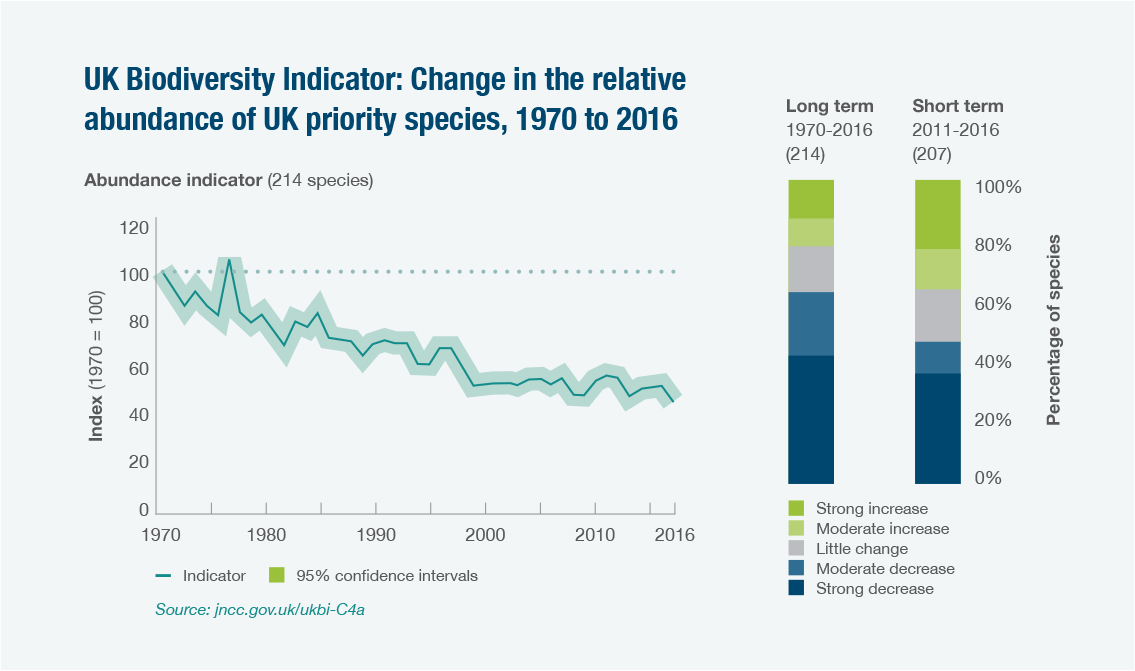Chapter 10 Afterword: Impact on Biodiversity
This Insight has focused on animals in business and investment by looking at the many industries that rely, at least in part, on animals or animal derived parts in their manufacturing supply chain. It is beyond the scope of this particular Insight to consider the wider business impacts on biodiversity but this is a critically important issue that has to be more robustly acknowledged by investors. The final part of this Insight will therefore provide some context around biodiversity with a view to our providing more on this for clients in future publications.
Animals and the Sustainable Development Goals: The principal SDGs relating to animals are Goals 14 and 15 (Life Below Water and Life on Land). These concern biodiversity, conservation and protection of critically endangered species rather than welfare. The Goals set key targets for restoring, conserving and sustainably promoting terrestrial and marine eco-systems.
The State of Nature 2019: For complex reasons nature remains under acute pressure and is in steep decline across many species. The State of Nature Report 2019 for the UK is an exhaustive look at the UK’s natural environment under pressure. It points to a decline of 13% in 696 ‘indicative’ species since 1970 and 5% decline in the distribution across some 6,654 species. 41% of species show either ‘strong’ or ‘moderate’ decrease in abundance over the same time frame. Overall, 15% of 8,431 observed species are threatened with extinction in Great Britain.

Dispiritingly, and despite decades of vital conservation work, nature appears to be in a losing battle. More species show relative decline in abundance than increases, or those ‘doing well’. For instance 26% of mammals and 43% of native birds are under threat. The Report also notes the abundance of species that have become extinct since 1970 including 32 plant, 33 fungi, seven vertebrate and 61 invertebrate breeds.
The greatest impact is due to intensive farming practices, climate change, hydrological change, urbanisation and reduction in living space or nature corridors, invasive species, pollution and loss of woodland cover. Business and industry may not be the main contributor to decline, but its activities can inhibit or prevent the flourishing of nature, and to that extent it can have a positive as well as a negative impact. Construction and planning could seek to make ‘space for nature’, water utilities can influence the degree to which marine and bird life flourish, and business can invest in conservation. These remain fairly novel considerations for investors, but we have already sought to engage pro-actively with a wide range of companies on their impacts and management of biodiversity. Look out for more on this as we publish the results.
The escalating imperilment of nature is too immense to be ignored: The United Nations in a stark warning published its Global Assessment Report in 2019 which noted inadequate international policy responses to the potential loss of 1,000,000 animal and plant species across the globe as abundance has fallen by 20% since the turn of the 20th century.